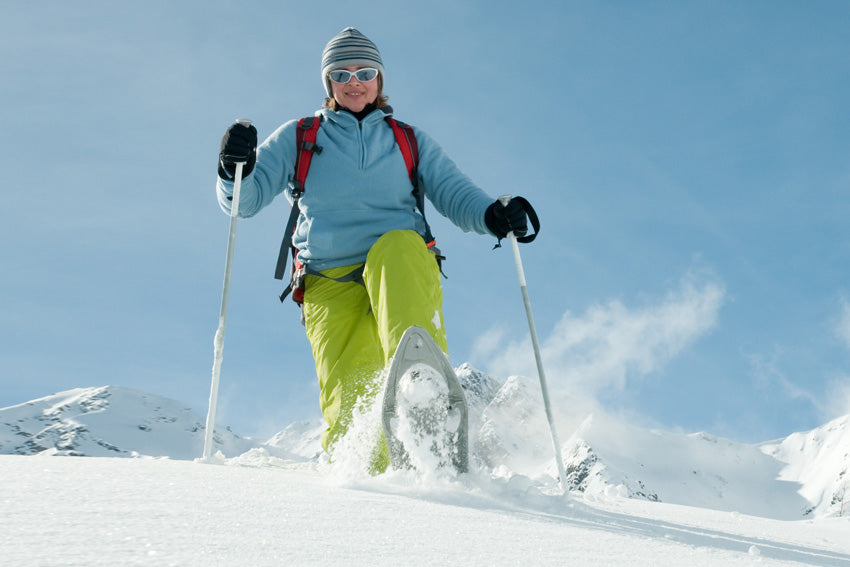
Choosing Snowshoes
Before we get into choosing the right snowshoes, let's bust a common myth: They don't float you right on top of the snowpack; even with the best snowshoes, you're still going to sink in a couple of inches. Snowshoe bindings may be one size fits all, but actual snowshoe decks aren't -- so if you find yourself up to your shins in snow, it's time to size up.
Weigh yourself
Snowshoes are sized by how much weight they can carry -- but you're not the only thing those shoes will be carrying. Before you step on the scale, suit up in your winter layers, boots, and fully loaded backpack.
When you hit the store, each pair of snowshoes will have a weight range printed on its tag. If your "fully loaded" weight falls at the high end of the range or if it's in the middle of the range and you plan to spend a lot of time in dry, loose powder, buy one size up.
Finally, although most snowshoe bindings are pretty much one size fits all, you should still take your boots -- and socks, of course -- with you to the store to make sure they'll fit.
Snowshoe tech
For most casual walkers and hikers, the only features you really need on snowshoes are a sturdy aluminum frame and a pair of cleats -- front and back -- positioned beneath each foot for extra traction on hills.
With that said, there's just as much of a technology and design arms race going on in the snowshoe world as anywhere else. Some of the features you might see out there include:
Spring-loaded bindings: These are actually great. They help keep the tails of your snowshoes up, reducing fatigue with every step -- but watch out, they sometimes spray a "tail" of snow onto the backs of your legs or jacket.
Removable tails: These let you carry smaller (and lighter) snowshoes for typical conditions, then snap on the removable tails if you're going to carry a heavy pack or travel in deep snow.
Frame spikes: Spikes built into the bottom of the snowshoe frame give you better traction on hard-packed snow; some snowshoes have extra cleats or crampons underfoot for additional traction.
Flexible decks: Flex-deck snowshoes allow for a more natural stride and better contact with the snow throughout that stride.
Speed laces: Some snowshoe manufacturers have started using Boa twist closures to eliminate fiddling with the bindings -- just step into the binding, twist to tighten, and go.
Quick-release bindings: These are mostly for snowboarders and mountaineers who might need to get out of their snowshoes quickly in case of an avalanche.
How much will I pay? You can easily drop several hundred dollars on snowshoes, but you can get a solid starter pair for about $80 for adults, or $40 to $50 for kids.
---
How to get up if you fall:
How to attach snowshoes to your backpack:
http://hiking.about.com/od/essential-gear-for-hiking/ss/How-To-Attach-Snowshoes-To-Your-Backpack.htm
Look like a pro on snowshoes:
http://hiking.about.com/od/seasonal-hiking-attractions/a/Tips-For-Hiking-In-Snowshoes.htm
Article written by Lisa Maloney
Lisa Maloney is the Hiking Expert at About.com




